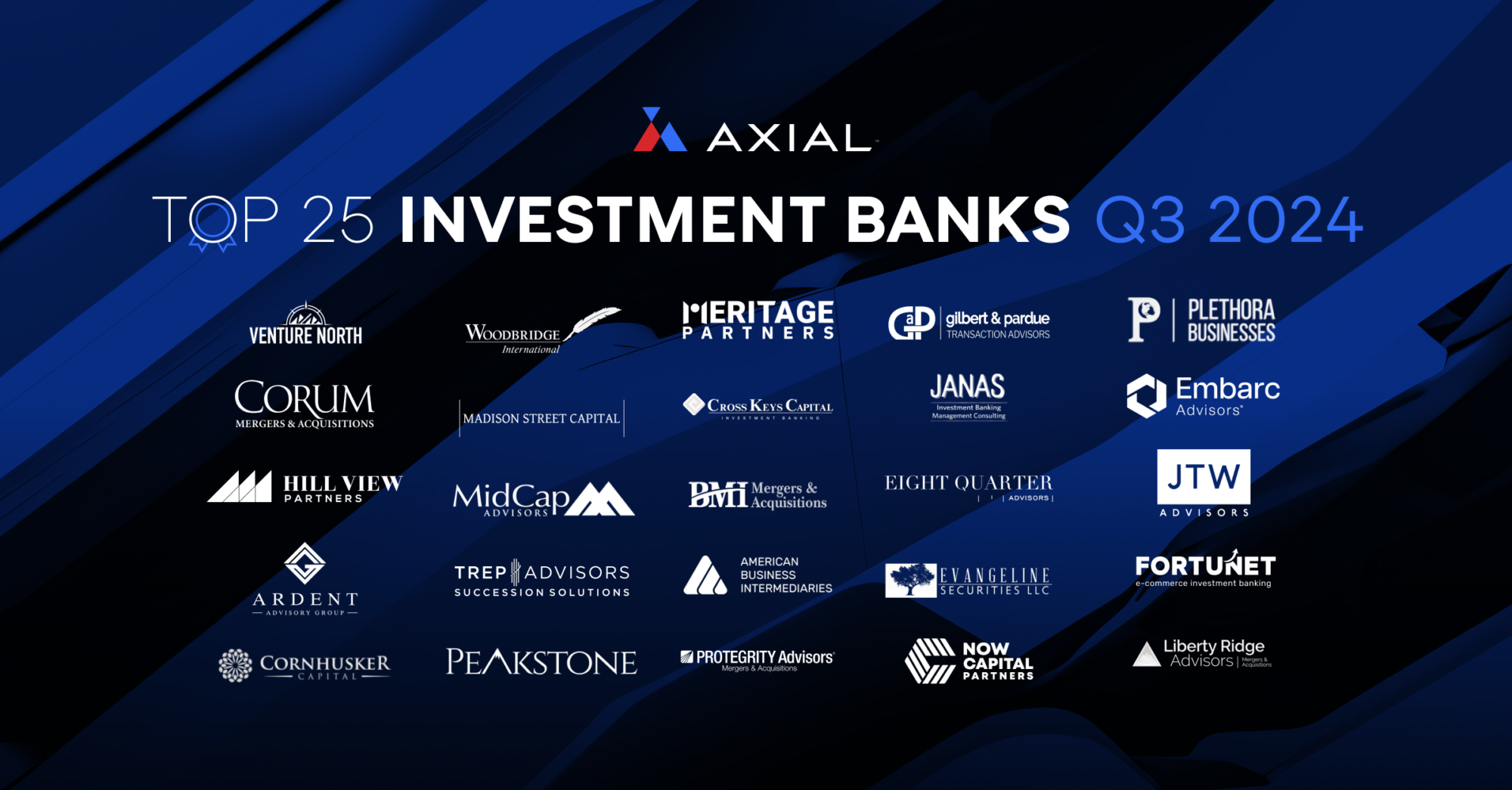
Top 25 Lower Middle Market Investment Banks | Q3 2024
Axial is excited to release our Q3 2024 Lower Middle Market Investment Banking League Tables. To assemble this list, we…
For business owners, the New Year is an ideal time to reflect on long-term goals for your organization. A banker can provide valuable insight on trends in your industry and the market as a whole.
We talked to George Shea, Managing Partner at Focus Investment Bank, and Keith Dee, Founder and President of Osage Advisors, about a few of their insights for M&A going into 2017.
For those looking to explore a transaction in 2017, “my biggest advice is to begin thinking long before you execute, whether you do it on your own or hire an investment banker,” says Shea. “Make sure you have your financial house in order and understand the key metrics of your business — you should be able to slice and dice your financial information quickly and efficiently.”
1. “Search funds have proliferated the lower middle market.”
Search funds typically comprise individuals who are looking to buy and then operate a company (usually one smaller in size than the typical target for a private equity firm). “There were a handful of search funds five years ago, and now they’re everywhere,” says Dee. “When a business does not fit the overall objectives of either a strategic buyer or private equity fund, search funds provide a viable option for owners looking to sell their businesses.
Promoted as part of top MBA programs, “they’ve become a generational trend for young entrepreneurs who want to buy a business and who have an investor base backing them up.” He notes that search funds tend to be conservative when it comes to valuations — he estimates 90% will be below strategics or even private equity — “because they will become the owner-operator of the business and have to go back and sell the deal to their investors who write the checks for them.”
2. “Private equity is going upstream.”
“I’ve found equity investors are less interested in small add-ons unless they meet very stringent investment criteria,” says Dee, who typically works with companies between $1-$5 million in EBITDA.
“This is especially true for sub-$2 million deals, an area they were much more aggressive in a couple of years ago. With the money they’re raising now — half billion dollar funds vs. quarter billion dollar funds — it might not make sense as they are looking to deploy more capital per transaction.”
This may mean smaller companies looking to sell turn to strategic buyers, search funds, or independent sponsors (also on the rise).
3. “It’s still a seller’s market.”
We’re not at the peak of the seller’s market yet, according to Dee. “There’s so much money in the lower middle market, and even more being raised on the equity side. Equity investors and strategics alike are all looking for quality deal flow. It all comes back to supply and demand. It continues to be a seller’s market due to a short supply of quality companies, and I’m not sure when the pendulum will switch to a buyer’s market.”
“Timing is everything,” he adds. “You always want to be selling on an uptrend. You don’t have to be selling at the top of the market, but you do want to be selling on positive trends both in terms of sales and EBITDA.”
In this video, Shea discusses tips for preparing for a transaction:
This is particularly true in the aerospace markets, says Dee. “We get a huge number of inquiries from buyers, both private equity and strategics, looking for aerospace-related businesses. The trend has been constant through 2017 and we expect it to continue into 2017.
“This is partly because large manufacturers like Boeing and GE are gearing up for big projects in the next 20 years. Just as important though is the human capital component — buyers are looking for talent. A highly skilled labor force is difficult to find right now. In addition, larger companies have reached capacity in their own facilities and are interested in acquiring smaller companies that may not be at full capacity.”
2. “Infrastructure, energy, and defense companies might want to wait and see on M&A.”
Dee predicts that due to the new presidential administration, “infrastructure, energy, and defense-related companies will likely see a bounce of work not next year, if not next year, certainly in 2018 or 2019. The question for sellers is, does it make sense to wait to see how it plays out? That’s a personal choice you have to make.” Dee notes that older business owners may be better off initiating a deal process rather than playing a waiting game. “If you’re a couple years older, you may find yourself in a more vulnerable position and there may be other concerns that come into play.”
3. “Buyers continue to reward recurring revenue in IT services businesses.”
“At every level of the IT services industry, buyers are rewarding recurring revenue. This is a global trend we’ve been seeing,” says Shea, who specializes in software and IT services companies. “Buyers are paying much higher premiums to companies that have shifted to recurring revenue vs. project-based.”
In this video, Dee discusses the importance of educating oneself as a seller:
